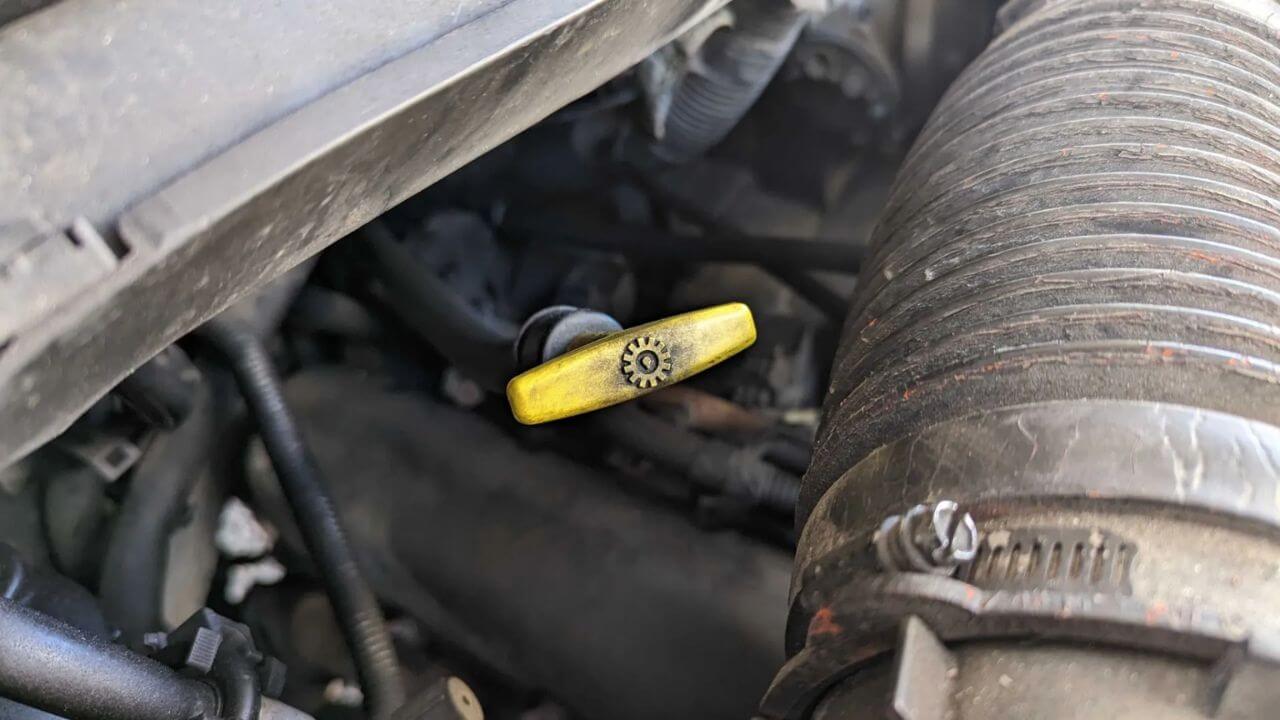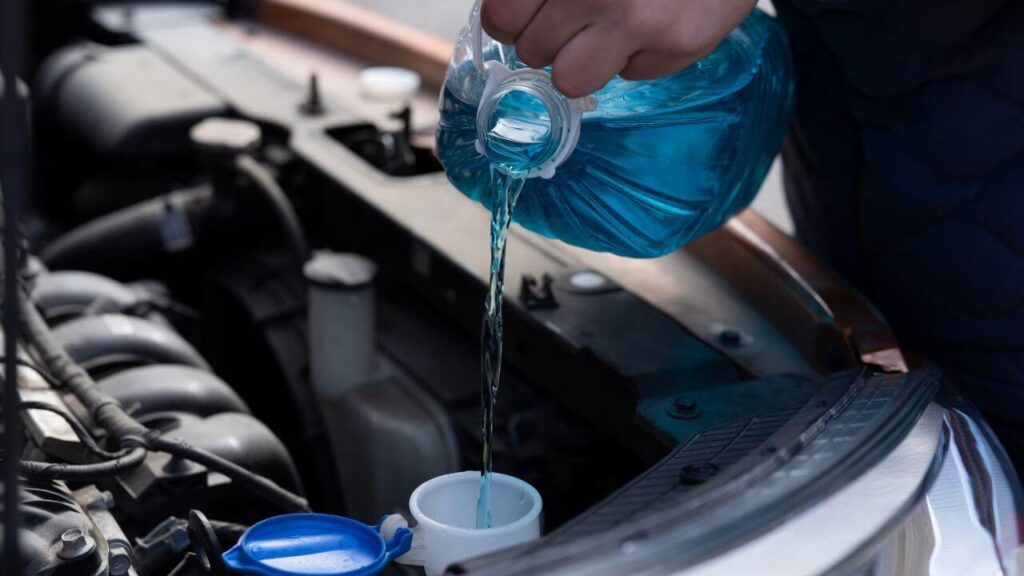Master how to check transmission fluid with our comprehensive guide. Get expert tips, safety procedures, and maintenance advice to keep your car running smoothly
It is important to keep your car in the best possible operation and preserve its effectiveness and durability, but most vehicle drivers forget about one of the simplest car maintenance practices, and it is checking the level of the car transmission fluid. Knowing the correct procedure of checking the transmission fluid can help you save thousands of dollars on expensive repairs and also enjoy fluid gear changes and optimal vehicle performance. This is a detailed manual that not only discusses the basic steps of checking the fluids in your car, but also teaches you how to interpret the status of the fluids and take the necessary safety precautions.
The importance of Transmission Fluid maintenance.

In order to detect possible problems in their early stages and prevent their development into significant problems, regular inspection of transmission fluids is recommended. Studies have shown that more than 90 percent of all failures in the automatic transmission are directly associated with the lack of maintenance or deteriorated transmission fluid. Through regular checking schedules, drivers are able to increase life span of transmission, enhance car performance, and circumvent costly emergency maintenance work.
Different Types of Transmission Fluids.
Contemporary automobiles employ different types of transmission fluids, each of which is designed to match a transmission type. Automatic Transmission Fluid (ATF) is usually bright red or pink and is relatively thin to pass through complex hydraulically powered systems. Manual transmission fluid (MTF) is typically heavier and darker, and is intended to be robust to the manual gearbox load-bearing demands.
Continuously Variable Transmission (CVT) fluid is a special type, where the friction modifiers are designed to be the best in the belt and the pulley. Moreover, numerous manufacturers have got their fluid specifications like Toyota WS ATF, Ford Mercon specifications or Chrysler ATF+4 versions. Never use the wrong type of fluid, consult your owner manual to be sure of the type of fluid you need.
Tools and Safety Preparations.
Prior to any transmission fluid checks, prepare the required equipment to provide the right readings and prevent any injuries. A clean, lint-free cloth to clean the dipstick, a funnel to add any fluids that might be needed, and the right transmission fluid to fit your car should be listed among the essential tools. Also, it is worth noting that it is better to have a flashlight in case of low light conditions in the engine compartments.
The safety concerns are still considered as the number one priority during the checking process. It is always advisable to use parking brake to avoid vehicle movement, use protective gloves to avoid contact with hot parts and damaging materials and work in well ventilated places so as not to breathe in exhaust fumes. Because of the importance underlined in the professional maintenance instructions, it is also prudent to wear safety goggles to protect your eyes against any possible splashes or pieces of debris that could happen when checking or adding transmission fluid.
Checking the Transmission Fluid Step by Step.
Preparing Your Vehicle
The correct level of preparation of the vehicle guarantees that the readings of the fluid levels are correct and there is no possibility of measurement errors. Park your car on a flat surface because an inclined surface may cause a significant change in the fluid distribution and the dipstick reading. Turn on the engine and wait about 5-10 minutes with the engine off but running to make sure the transmission has an adequate temperature to operate. The warm phase enables the circulation of fluid in the whole system giving more precise level measurements.
During fluid checks, the engine must be running on most vehicles, but some manufacturers indicate otherwise. The Honda cars, say, usually have to be checked when the engine hot but off. Concerning engine operation and gears to use in the course of fluid check, always use the owner manual requirements to know what to do in relation to the manufacture.
Finding the Transmission Dipstick.
Transmission dipstick is commonly located at the back of the engine compartment where it often has a brightly handled end (red, yellow or orange) to identify it easily. In front-wheel-drive cars, the dipstick is inserted in the transaxle region, whereas in rear-wheel-drives, it is found in the transmission region behind the engine. In case of confusion with the location of the dipstick, consult your car owner book or have a clear label on the handle of the dipstick.
It is worth noting that most modern cars use closed transmission systems with no conventional dipsticks. Their sealed units cannot be serviced by an amateur, and a set of special tools and processes is required to check the fluid. In case the vehicle does not have an easily accessible dipstick, then an assessment of fluid levels should be checked by a qualified transmission specialist.
Condition and Fluid Levels Reading.
Cleanse the dipstick by washing it with a lint-free cloth. Re-insert the dipstick fully and make sure that it fits in the tube correctly before taking it out once more and reading the result. The dipstick has marks of correct fluid levels, usually marked Full, add or some other words. Dipsticks also have Hot and Cold indications on some that are used to indicate the readings of hot and cold temperatures.
Check condition and fluid level on every check. The healthy transmission fluid must be bright red or pink in color and of clear consistency and sweet smell. Burnt odors or dark brown or black fluid, and visible particles suggest that something may be wrong and it needs professional help. According to research conducted in automotive maintenance, transmission fluid is available in several different colors but in any case the fluid must be clear with no burnt smell.
Temperature Temperature Checking Hot vs. Cold Checking.
Knowledge of temperature requirements during the transmission fluid checks will avoid misleading measurements and probable overflowing and underfilling of the fluid. The majority of manufacturers recommend checking fluid at operating temperature (usually, 95-120 0 C) with the engine running. This provides the assurance of good fluid expansion and circulation as well as the circulation in the transmission system rendering good level measurements.
The dipstick Cold marking is utilized mainly as an indicator of fill level in factories, to provide a minimum level of fluid to prevent initial startup. Nevertheless, marking of the Hot is the desired operating level of the transmission and is intended to undergo routine checks. According to technical documentation, the mark indicating the intended working level of the transmission is referred to as the hot mark on the dipstick.
There are cars on which closed transmission systems are used that demand particular temperature control through diagnostic scan devices. Such systems will require equipment and skills in professional service, as they require accurate temperature control (usually 95-120 o F) during fluid level changes.
Types of errors and prevention.
There are a number of common mistakes that can impair the accuracy of transmission fluid checks and, at worst, break transmission parts. A fluid check with the engine off will give a false reading because the fluid will not settle in the pan and will still be in different passages within the transmission. In the same way, dirty dipsticks have the potential to pollute clean fluid and mask the precise level position.
Another severe issue is overfilling, which can lead to the development of pressure accumulation, unstable movement, and transmission injuries. Add fluid in small portions checking the levels regularly to prevent filling the tanks past the maximum fill mark. Incompatible fluids can lead to problems in compatibility and performance, so never substitute specifications with what the manufacturer suggests.
Red Flag Low or Contaminated Fluid.
This is because the transmission fluid issues can be known early enough in time, allowing this kind of maintenance to be performed before things get out of control. The latent or severe changing frequently showcases inadequate fluid amounts or poor fluid quality. A grinding, whining, or humming sound when changing gears is an indication of insufficient lubrication or wear on the internal components.
Other symptoms also encompass slipping gears where the engine increases in rev but not in corresponding increase in speed and burning smells that suggest overheated fluid. Optical observation with dark and thick or contaminated fluid requires urgent professional review. Recent studies affirm that frequent monitoring of the fluid state can assist to identify issues at an early stage, which could save you the high cost of repair expenses in the future.
Professional Service and Maintenance Intervals.
The frequency of the change of transmission fluid is greatly different according to vehicle type, road conditions, various manufacturers, and so forth. Automatic transmissions are generally serviced after every 30,000-100,000 miles and manual after every 30,000-60,000 miles. Critical driving factors such as towing frequently, stop-and-go, or extreme temperatures might require regular product maintenance.
Sealed transmission systems would require professional service since specialized equipment would be necessary. Such systems usually employ filling processes that are controlled by temperature and diagnostic scan equipment to verify the correct fluid levels. According to the transmission experts, it would be far more cost effective to spend a couple of hundred dollars on a fluid service than spending thousands of dollars on a transmission repair.
Refined Reflections and Technological Facilitation.
Modern automobiles are also becoming more technologically advanced in their transmission control mechanisms which combine the electronic controls with the old hydraulic systems. Such systems might also include real-time fluid tracking sensors, automatic control of temperature, and diagnostic systems which will notify the driver about possible complications. The knowledge of these progressive functions aids proprietors to interpret the dashboard warnings and uphold an excellent performance of transmission.
The transmission fluid technology has been continuously developed, and the research has been directed on the incompatibility of electrical components, degradation analysis, and methods of contamination. Professional testing laboratories have adopted advanced methods of analysis such as spectrometric analysis, viscosity analysis, and chemical degradation analysis to maximize intervals of maintenance and fluid functionality.
Verdict
Learning how to check transmission fluid is a primary skill that all car owners must learn to maintain the best car performance and durability. By being aware of appropriate protocols, identifying red flags, and a routine of frequent maintenance checks, drivers greatly increase the time of transmission and prevent a high price of emergency services. It is important to keep in mind that the transmission fluid fulfills many vital roles beyond the mere lubrication of the engine components; the fluid can also be used as a coolant, hydraulic, and wear-resistant coating.
The returns on the investment in routine maintenance of the transmission fluids are high in terms of enhanced reliability of the vehicles, better functions and longer life of the components. Regardless of whether you are using an old fashioned dipstick system or a more sophisticated sealed transmission, it is important to take care of the quality of the fluid and follow the service schedule of the vehicle as it is one of the priciest and most complicated systems of your vehicle. The adherence to all-embracing recommendations provided in this guide and addressing the professional specialists as needed can ensure the best state of transmission and dozens of years of uninterrupted driving performance.

